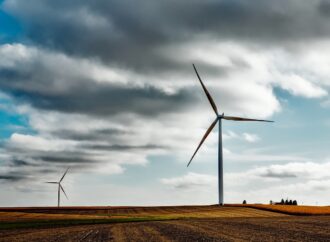How much would it cost if we had to pay for the clean air that forests provide? For the groundwater filtered by natural soils? For the beautiful setting of the ocean when on holiday? How would businesses and national economies compare if we looked beyond the GDP, towards intangible environmental services? Natural Capital Accounting (NCA) has the answers, but its pioneers need to communicate what it’s all about to ensure implementation.
Even though they are crucial in tourism and recreation, food and appreciation, air and water filtration, as well as erosion and flood control, environmental products and services are barely represented in classic accounting. Ecosystems provide invaluable yet rather intangible services and contributions to national economies that classic indicators such as the GDP neglect. Therefore, they are neither captured nor considered in policy decisions so far. NCA can change this.
State of the art in the EU
While the values of ecosystem services are often abstract, NCA uses tools that can measure changes in stock and condition of natural capital, assign them monetary values and allow for their integration into existing systems of accounting and reporting. Since the 1990s the EU has been a pioneer in this field, most currently with the knowledge innovation project on an Integrated system for Natural Capital and ecosystem services Accounting (KIP-INCA). Which is setting up a common platform for tools and data sets on NCA, assessing value and economic importance of ecosystems.
The KIP-INCA platform would display information on ecosystem services, their extent, type, condition and value from the whole EU in one place. Furthermore, the tools for analysis of services and capital allow for highlighting interdependencies with economic activities. The platform would make it possible to measure changes over time and permit to present information at different scales – regionally, nationally and EU-wide.
Applications and implications of NCA
Research on and design of viable tools is pretty advanced by now. No wonder, since the statistical agency Eurostat, DG Environment (ENV), DG Research and Innovation (RTD), DG Joint Research Centre (JRC) and the European Environment Agency (EEA) are collaborating on the matter. But even more importantly they also identified potential applications of NCA – and they are multi-fold.
At the EU-level, the proposed tools can inform macro-economic policies and the formulation of new economic indicators alongside the GDP. These can be the basis for better decisions and policies in environment, forestry, urban and land use, but also health and well-being, as well as research and innovation. Even in business-related policies the role of natural capital can be pivotal for calculations on revenue generation and risk management. Incentivizing businesses to factor in the ecosystem services will force them to rework their balance sheets and will change the game of classic accounting.
Internationally, KIP-INCA is a vital part of the System of Environmental-Economic Accounting Experimental Ecosystem Accounting (SEEA-EEA), a United Nations (UN) initiative that aims at setting international standards for NCA. Strengthening this initiative has two main implications: On a corporate level, re-working business accounting will influence outcomes and strategies of businesses and change power balances in international trading. On a public level, factoring NCA will alter the way we see countries and their assets. If compared not only on classic economic terms, but also environmental ones can change their position and standing at international negotiation tables. Additionally, NCA can also contribute to implementing the UN Agenda 2030 for Sustainable Development since it offers considerably more data points towards measuring the complex and multi-faceted realities of inclusive and integrated development.
Spreading the Word
Due to the extensive ground work in its first phase, KIP-INCA has it all: a solid empirical underpinning and viable statistical tools, backing by crucial departments within the EU, international-level support and a strong case for applications in policy making and policy analysis. However, the next step is to get the makers and shakers of Brussels, in the member states and internationally to actually use the tools developed. Eventually, every instrument is only as good as its implementation. Effective communication can help to reach this.
To promote NCA and its advantageous applications, communication strategies need to be tailored to target groups. While the general value of NCA is not in question, it is crucial to show policy-makers what particular benefits they and their constituencies can gain from utilizing ecosystem accounts. This is particularly important, since potential users of NCA are spread over so many policy-fields: from environment, to business, to development. KIP-INCA can offer valuable tools and information for all of them, but this has to be articulated. Case studies for advantageous usage can show benefits and foster understanding.
Another additional target group is the EU citizens. Not only the highest level of decision-makers should be roped in into the benefits of NCA. In times of growing awareness for environmental issues and interconnectivity of economic decisions, EU citizens themselves become the addressees of policy tools. Information on EU policies and strategies is already disseminated via social media platforms and interactive media tools; spreading the word on the EU’s NCA with appealing and engaging campaigns can potentially increase its credibility and also set up important feedback loops from citizens to policy-makers. All in all, a proactive communication strategy can showcase and augment progress in NCA and help with implementation on all levels.














Leave a Comment
Your email address will not be published. Required fields are marked with *